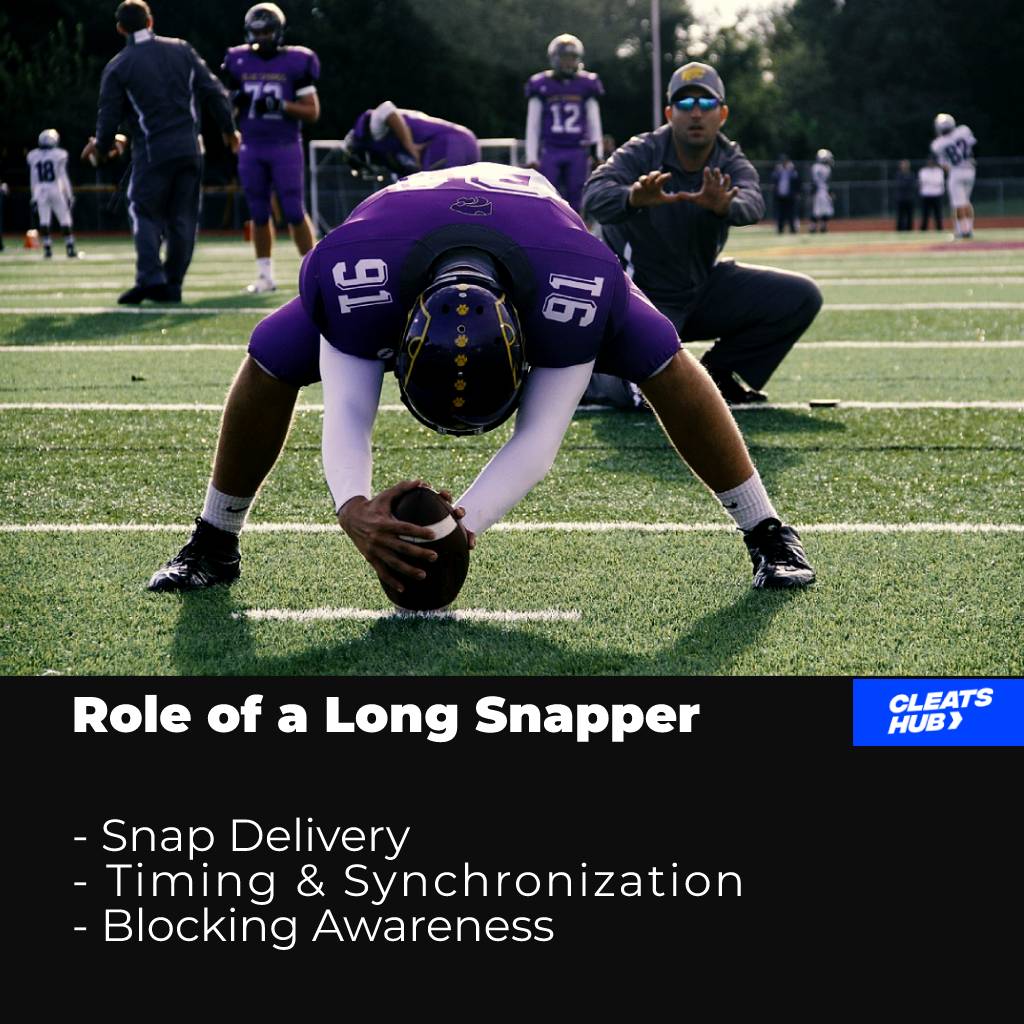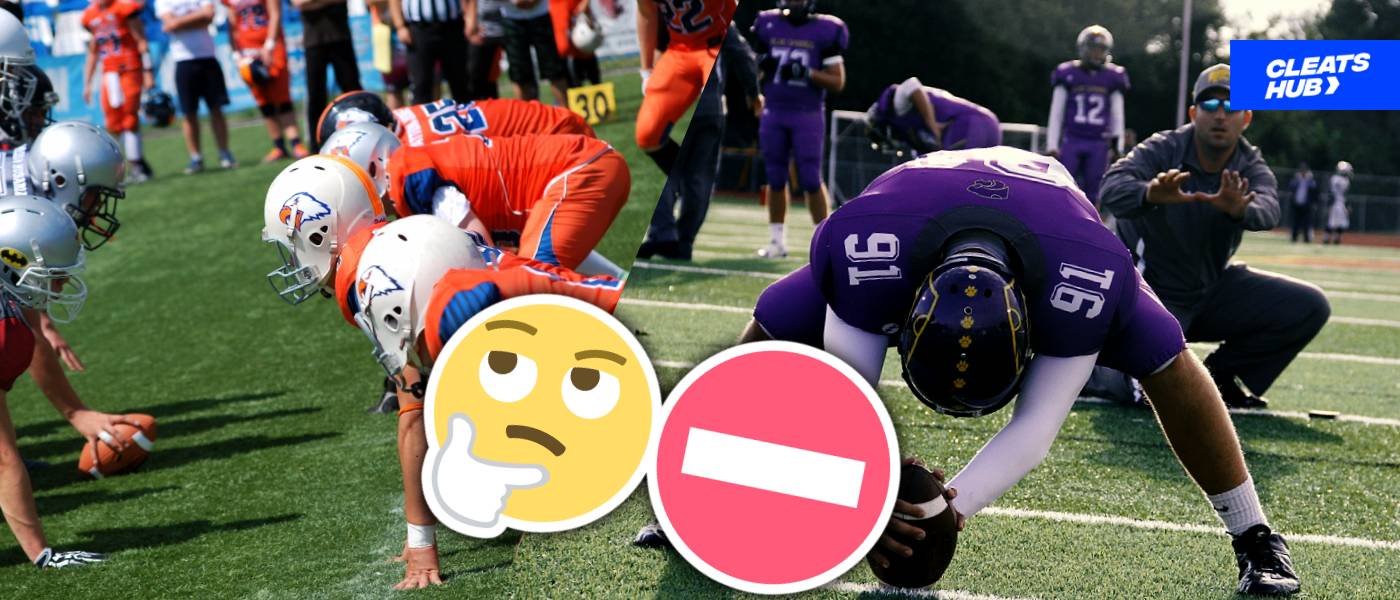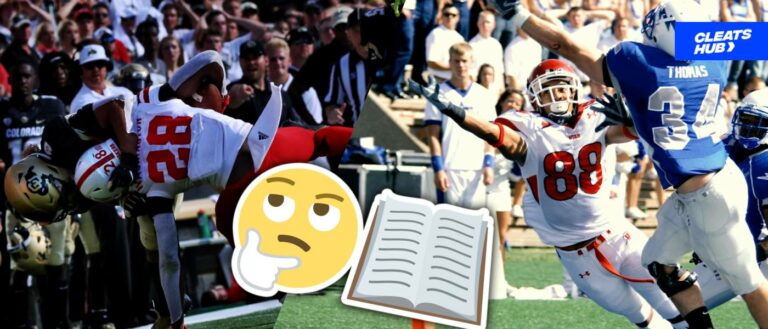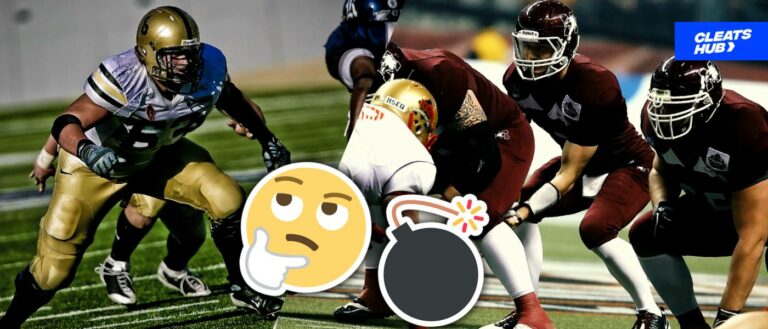What is a Long Snapper In Football? NHL Long Snappers
One position that operates in the background but is just as important to the game as the quarterback, running backs, and wide receivers who get all the attention, is the long snapper.
The quarterback is the one position in football where every time he plays, he must perform flawlessly. Today we will be examining the snapper’s roles, importance, specific talents, and effect on game outcomes.
About Long Snappers In Football
Just like holders, kickers, punters, and other positions in football, long snappers are part of the special team. Long snappers are players who snap the ball to a holder during a field goal or to a punter to make a punt.
They are an essential part of the game, with the success of a field goal or punt resting heavily on the success and smoothness of the snap.
A snap, in football, is when a player (the long snapper) bends and initiates a backward pass of the ball to his teammate. There are mainly two types of snaps, one is the shotgun pass, which is usually conducted when a field goal is to be taken.
The distance of shotgun snaps is about 5-8 yards, not that much compared to long snaps (deep snaps), which are made to the punter, who can be anywhere from 15 yards away.
Is Long Snapper A Position In Football?
Even though the roster list of NFL teams allows for only 53 players, a special slot is also left open for a dedicated long-snapper. Sometimes in football, teams appoint certain roles to another position player, just as a backup quarterback can be given the role of a holder.
The reason for this is to maximize the roster space so as to allow room for more key players/positions. But for long snappers, this is not the case.
Earlier in the history of football, teams often allowed quarterbacks to take snaps, but as the game progressed, there was a need for specialized players who could guarantee precise and accurate snaps all the time.
This actuality comes from the reality that the skills for a long snap to a punter differ considerably from those for a field goal or extra points.
And also, aside from the different skills needed for each scenario in the game, long snappers work in tackling the opposing team’s players advancing to disrupt the success of the punt or field goal.
is A long snapper important in football?
The importance of a dedicated player is evident in periods when the faith of a team depends on a successful punt, field goal, or extra-point attempt. The first determinant of the outcome is the success of the snap.
Holders and punters have a certain type of way in which they like to catch the ball, and the technique in which the ball is released in both scenarios differs from one another.
Therefore, it takes a dedicated snapper and a sufficient amount of practice to learn, perfect, and dominate performing snaps, irrespective of the pressure or tension behind the game.
Do Long Snappers Do Anything Else?
Aside from taking snaps, long snappers also participate in seeing the outcome of a punt, field goal, or extra point. They do this by moving on to stop the advancement of the opposing team until the action is seen through.
Why Doesn’t The Center Serve As The Long Snapper In Football?
As mentioned earlier, the position of long snapper was not initially given a dedicated spot on team rosters. During this period, the position players that were saddled with the role of long snappers were the center.
But there were some factors that led to the creation of long snapper as an independent position:
- Injuries to Position Players:
Position players like centers are more liable to get injured during games and this impact the success rate of snaps. If the center gets injured during a game, a replacement player to take the snap is likely not to be as precise or successful. - Build of Center Players:
Center players have gotten bigger and this increases the difficulty in them bending down to take long snaps. In addition, it makes it more difficult for them to snap the ball with the expected speed and precision. - Need For A Snap Specialist:
NHL teams saw the need for a specialist who trained and took drills specifically for improving the snapping of the ball for punts, field goals, and extra points. This was due to the fact that a strong snap has the power to alter a game’s outcome.
Role of a Long Snapper

Long snappers in American football are responsible for delivering accurate and consistent snaps during kicking plays.
They aim to efficiently transmit the ball from the line of scrimmage to the holder or punter, allowing field goals, extra points, and punts.
- Accurate Snap Delivery:
For every long snapper, the key focus is to execute a sharp and precise snap to the holder or punter. This is done irrespective of the target – be it a holder or the punter for punts. Long snappers must also learn to do this irrespective of the amount of pressure or tension that accompanies such a snap. - Synchronization and Timing
Effective kicking plays entail precise timing and coordination, which long snappers must be mindful of. They must time their snap with the movements and approach of the kicker or punter in order to provide a flawless changeover. - Calculative Snap Release Velocity:
The speed at which the snap is released is another vital role that needs to be noted by long snappers. When releasing a snap, they must aim to generate enough velocity on the ball.
This is so that the ball can rapidly reach the holder who then sets it for the kicker or punter. The aim of this is to allow for a smooth and swift transition into the kicking motion. The faster release of the snaps, the less likely it will be obstructed by the opposing team’s players. - Blocking Awareness:
While the snap is a long snapper’s primary task, they must also be mindful of any potential dangers and defenders. This is to see that the kick by the kicker or punter goes through.
After a long snap, the long snapper must tackle (hold down) a player. This is because the ratio of men holding down the opposing team to opposing players moving in to intercept the kicker is 8:9.
As a result, if he fails to make a block, the additional player on the opposing team has a free window to intercept the ball.
Types of Long Snappers

Long snappers are divided into two types in American football based on their roles and techniques. These are the different kinds:
1. Traditional Long Snapper
The most prevalent kind, the classic long snapper, snaps field goals, extra points, and punts. They are experts at rapidly and precisely delivering the ball to the holder or punter.
2. Rugby-Style Long Snapper
A long snapper that mostly delivers punt snaps is known as a rugby-style long snapper. The ball is snapped using a spinning action instead of the customary spiral in rugby, which is where this technique was developed from.
The rugby-style snap also aims to produce more unpredictable movement. It would be harder for defenders to anticipate the path of the ball.
Skills Required for a Long Snapper

Being a competent long-snapper in American football necessitates a distinct set of abilities. These abilities are required to execute accurate and consistent snaps during kicking plays.
The following are the essential skills for a long snapper:
1. Snapping Technique
Long snappers must have a correct snapping technique to consistently execute precise snaps. This covers grip and stance, as well as follow-through.
2. Accuracy
Another quality required of long snappers is accuracy. They must continuously place the ball in the desired location for the holder or punter. Yet, this is only possible with effective communication.
To sustain flawless operation, the snap’s trajectory, speed, and placement must be precise. This will also raise the possibility that the attempt will proceed without incident.
3. Speed and Timing
Technical proficiency for a long snapper heavily depends on accurate timing and quick release. The snap must be delivered swiftly enough for the holder or punter to receive it, but not so slowly that the other team can block it.
4. Consistency
Consistency is key for a long-snapper to succeed. Regardless of the weather, the conditions on the field, or the pressure situations, long snappers must consistently produce snaps with the right spin, speed, and angle.
Moreover, consistency frees the holder or punter from having to make modifications so they may focus on their task.
5. Blocking Awareness
While the major role of a long snapper is the snap, they must also have fundamental blocking ability. Long snappers must be alert of potential hazards and defenders in their immediate surroundings.
Moreover, they must be aware of potential gaps in the line and be ready to provide extra protection.
6. Mental Composure
Long snappers frequently play under tremendous pressure at crucial junctures in the game. They must retain their cool and attention in the face of extraneous distractions in order to execute their snaps properly.
Also, they must maintain an unwavering attitude while snapping under extreme pressure, fully aware that the success of their snap will determine the outcome in the end.
Football Techniques By Long Snappers

Long snappers in American football employ specific techniques to carry out precise and repeatable snaps during kicking plays.
To hone these techniques, repetition, practice, and specialized instruction are used. Some methods are used by long snappers:
- Solid Grip:
Long snappers use a specific football grip known as the “long snap”. In this grip, the fingertips are used to hold the ball rather than the palm. The enlarged snap grip enhances ball spin, snap control, and precision. Squatting deeply helps long snappers build strength and explosiveness in their snaps. - Precision and Trajectory:
Long snappers aim for precise placement of their snaps together with a constant trajectory. They work on maintaining the ball’s trajectory so that it can move quickly and easily to the intended target. As a result, the holder or punter can transition more easily if the ball is thrown at the right velocity and location - Arm Extension:
Long snappers start the snap by fully extending their arms toward the target, which causes the ball to advance swiftly and precisely. - Wrist Snap:
As their arms fully stretch, long snappers start to snap their wrists downward, giving the ball spin for stability and control. - Follow-Through:
Long snappers stretch their arms downward following the snap to make sure there is a full follow-through. Its continuation lends consistency and strength to the snap.
Notable Long Snappers In The NFL

There have been many great players who have performed the role of long snappers in NFL history. However, we have mentioned the top five long snappers below.
1. Patrick Mannelly
Several people consider Patrick Mannelly to be one of the best long-snappers in NFL history. From 1998 through 2013, he played for the Chicago Bears for the entirety of his 16-year career.
Mannelly earned a great reputation for dependability, precision, and consistency in the way he carried out his responsibilities as a long snapper while he was a member of the Bulls. He participated in 245 games throughout his career, which set a record, and snapped numerous successful field goals and punts.
Due to his resilience and exceptional performance, Mannelly was also known as one of the best in the business.
2. Trey Junkin
Trey Junkin had a notable 19-year career playing for various NFL clubs from 1983 to 2002. Junkin’s consistency and precision helped him get to the top of the long snapping field during his era.
Also, he played in more than 250 games and took a ton of accurate shots. Because of his in-demand skills throughout his career, Junkin established himself as a dependable snapper for several teams.
3. Ethan Albright
With 16 seasons of NFL experience under his belt, long-snapper Ethan Albright enjoyed a very successful career. He occasionally played for the Miami Dolphins, Buffalo Bills, and Washington Redskins.
Albright was also praised for his exceptional precision and consistency especially when it comes to taking snaps, and this made him a vital component of his squad.
As part of his accolades, Albright was considered among the league’s best long snappers after being selected for the Pro Bowl in 2007.
4. Don Muhlbach
Don Muhlbach has been a prime example of consistency and dependability throughout his lengthy and ongoing NFL career. In 2004, he signed on with the Detroit Lions, and he has been a part of the group ever since.
His precision and capacity for dependable snap delivery make him a crucial component of the Lions’ special teams.
5. Brian Jennings
Brian Jennings played with the San Francisco 49ers for 13 years, from 2000 to 2012, and had a wildly successful career.
Jennings was one of the best long-snappers in the league while he was still an active player. In addition, he was known for his accuracy, agility, and toughness.
Also, he played in almost 200 games and delivered dependable and precise snaps on punts and field goals. Jennings was selected for the Pro Bowl in 2004, 2011, and 2012 with respect to his snapping skills.
Conclusion
A long snapper is the field’s untapped gem, to sum up. The long snapper quietly goes about their job as other players get acclaim and attention.
Their unique skills, flawless technique, and important contributions are what make field goals, extra points, and punts possible.
Thus, keep an eye out for that sly long-snapper the next time you watch a game. These are the unseen wizards who provide an extra splash of magic to American football.







